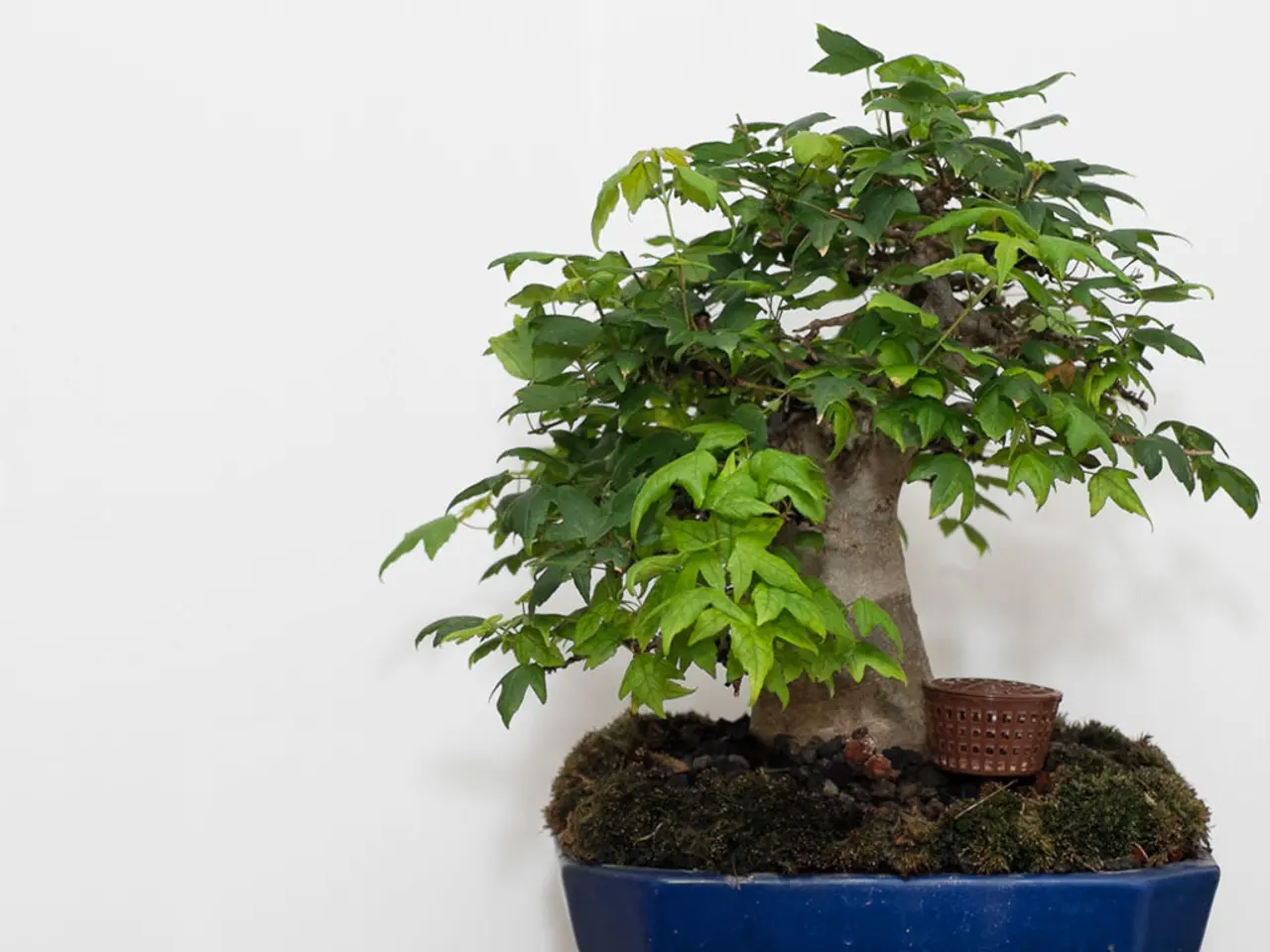The Depth Behind Bonsai's Small Containers
In the art of bonsai, the choice of pot can significantly impact the growth and aesthetic appeal of the tree. One key consideration is the depth of the pot, with shallow pots being particularly beneficial for bonsai trees.
Shallow pots are crucial for bonsai because they limit root growth, helping to maintain the miniaturization of the tree. This controlled growth keeps the tree small and proportionate to its pot. The limited depth also forces the tree to develop a dense, fibrous root system rather than long, spreading roots.
The shallow pots used for bonsai trees require specially formulated bonsai soil that drains well but retains enough moisture and allows good airflow. This environment prevents root rot and supports delicate feeder roots essential for nutrient uptake.
The excellent drainage in bonsai pots prevents waterlogging in the roots, which can be fatal, especially given the limited soil volume in shallow containers. This, combined with the quick drainage of water, encourages the grower to closely monitor watering and feeding, leading to healthier trees and more precise cultivation.
Shallow pots also complement the miniature tree’s appearance aesthetically, emphasizing the tree’s form and height without overpowering its visual presence.
When choosing a pot material for a bonsai tree, consider factors such as aesthetics, practicality, durability, and maintenance requirements. Wooden containers can add warmth and rusticity to a bonsai display, and they are traditionally used in bonsai art. Clay or ceramic pots offer excellent breathability and moisture retention for bonsai trees. Plastic pots provide good drainage and insulation properties, making them suitable for both indoor and outdoor use.
It's essential to ensure that the pot has the correct number of drainage holes. Smaller bonsai pots may have one or two drainage holes, while larger ones may have more. However, the size of the drainage holes should be large enough for water to flow out freely but not so big that soil particles are flushed out as well.
Lastly, it's important to maintain the drainage holes to prevent clogging, as this can cause poor drainage in bonsai pots.
In conclusion, shallow pots are crucial for bonsai because they limit root growth to maintain miniaturization, provide a suitable root environment with proper drainage and aeration, and support the aesthetic and horticultural needs specific to bonsai cultivation.
Bonsai tree species thrive best in shallow pots, as they limit root growth and promote a dense, fibrous root system that's ideal for maintaining the miniaturization of the tree. Moreover, when it comes to home-and-garden products like gardening pots, the material selection for a bonsai tree pot should prioritize aesthetics, practicality, durability, and maintenance requirements, such as those offered by wooden, clay, or ceramic, and plastic containers.




